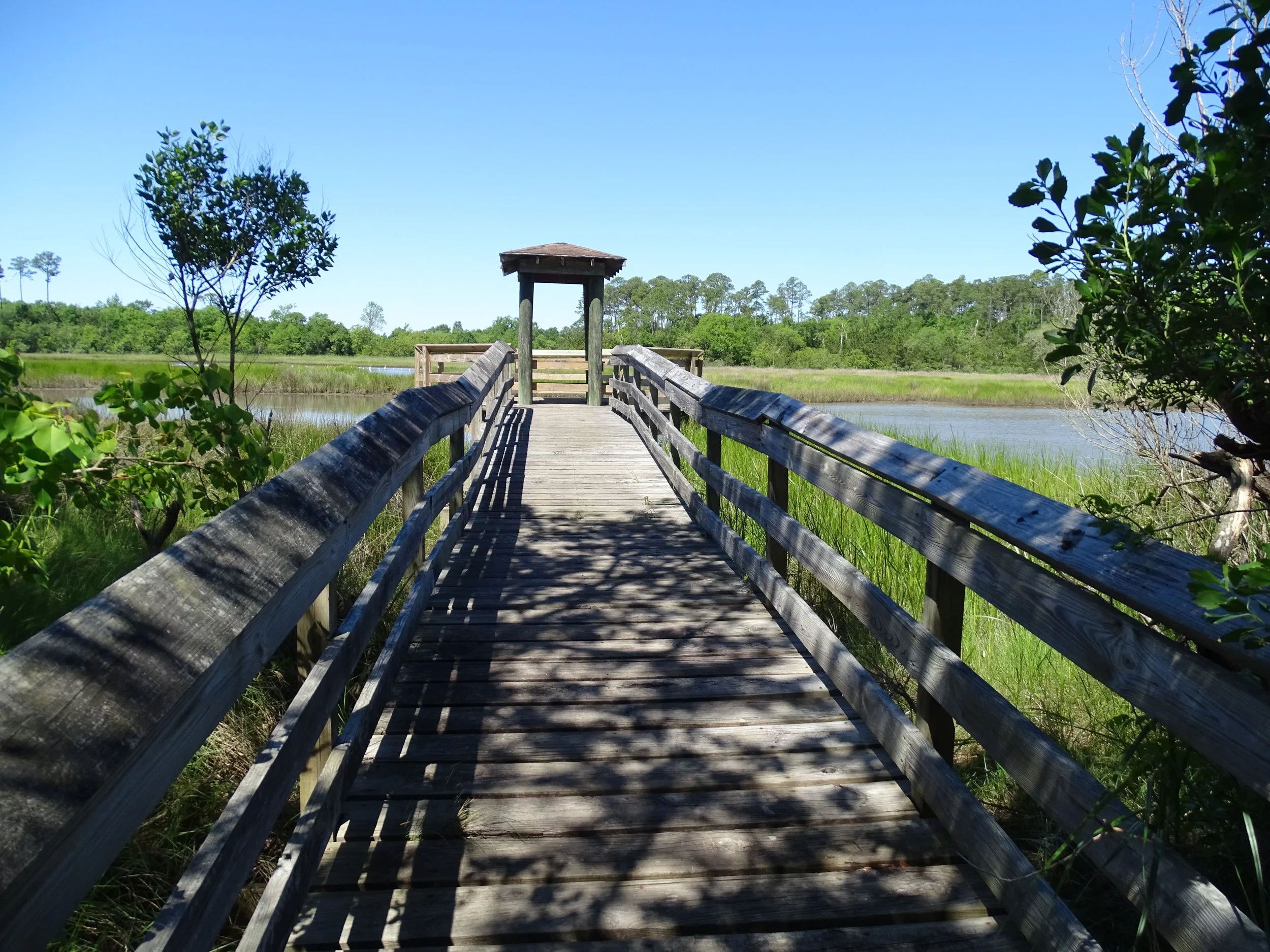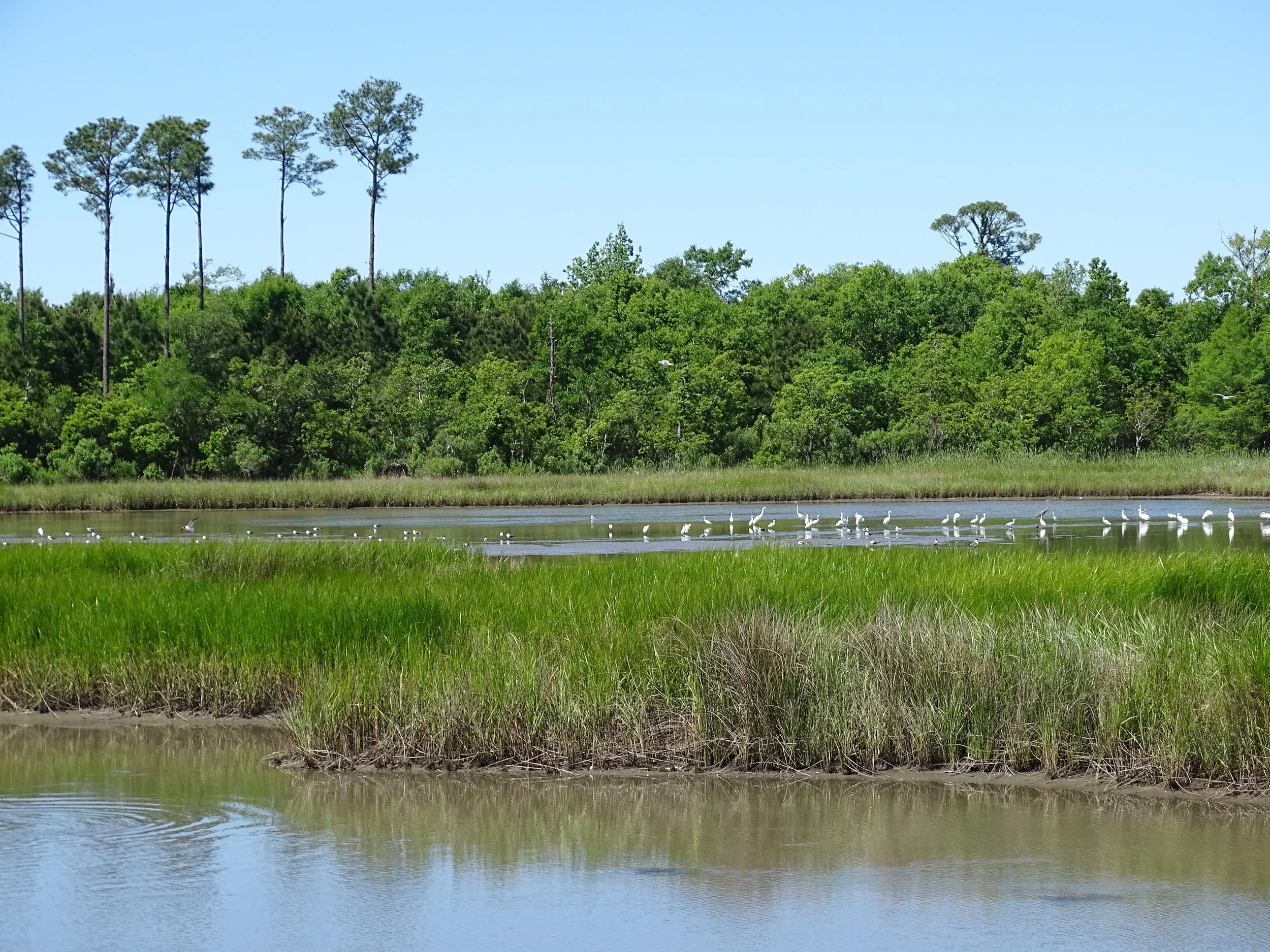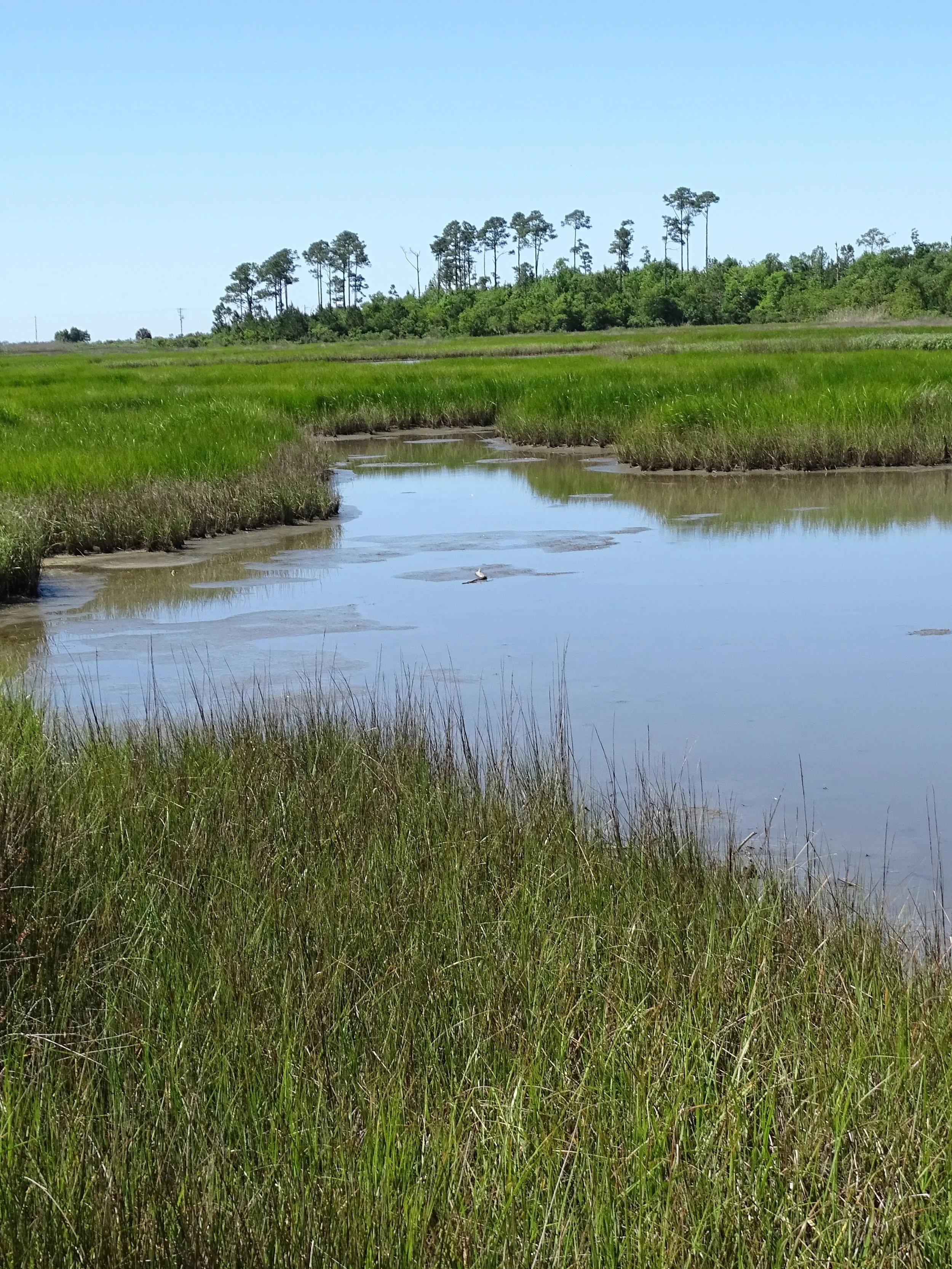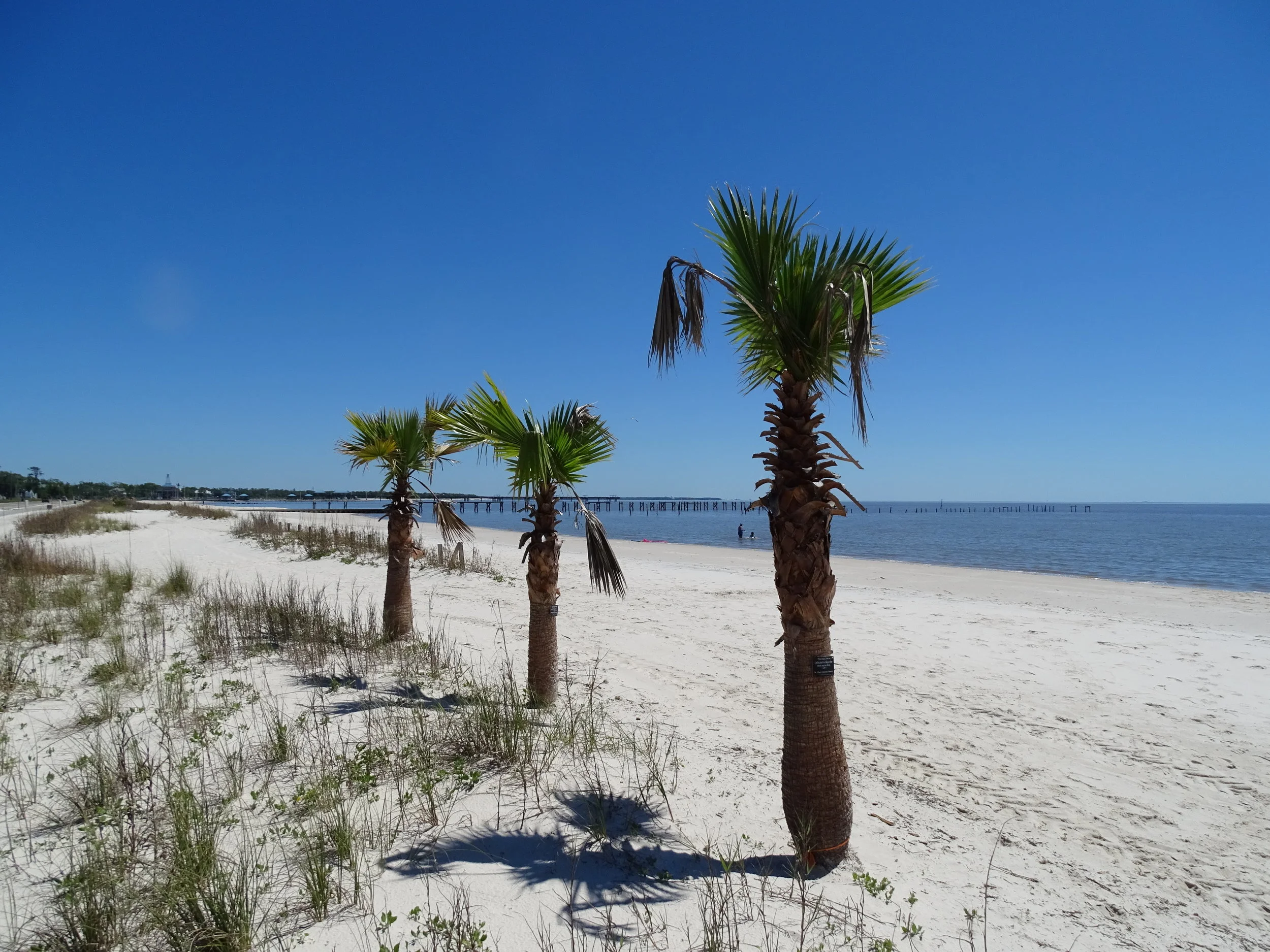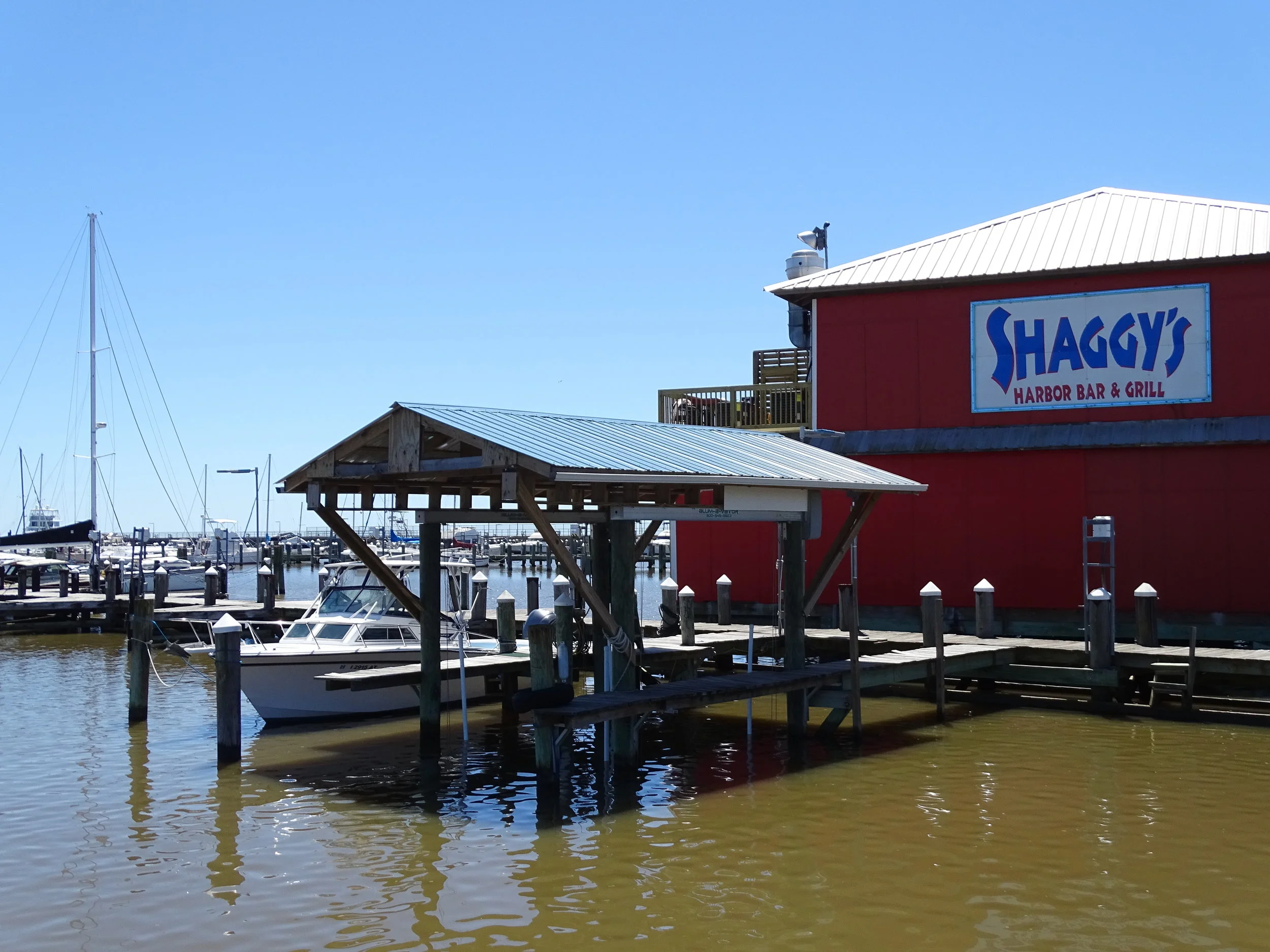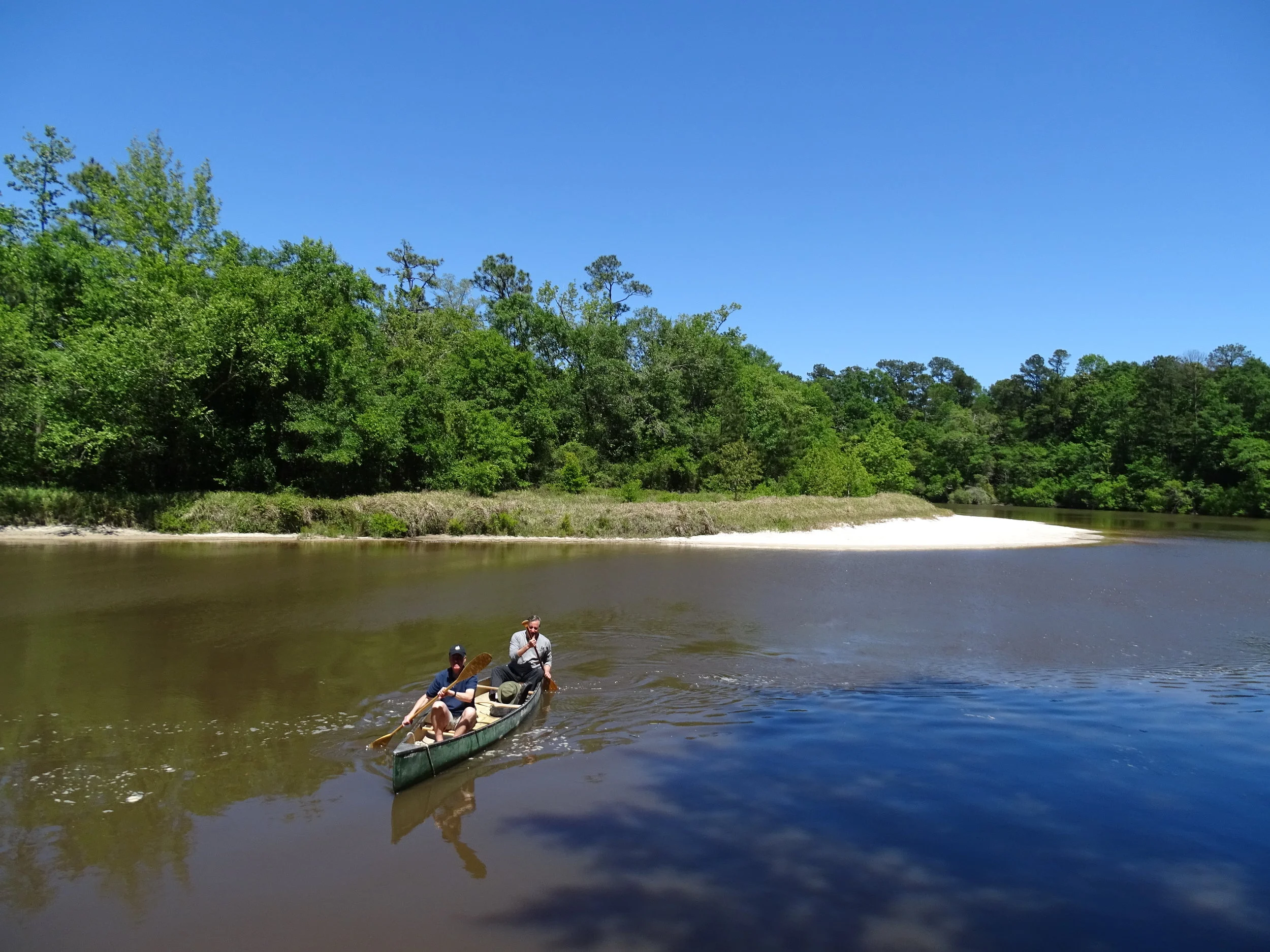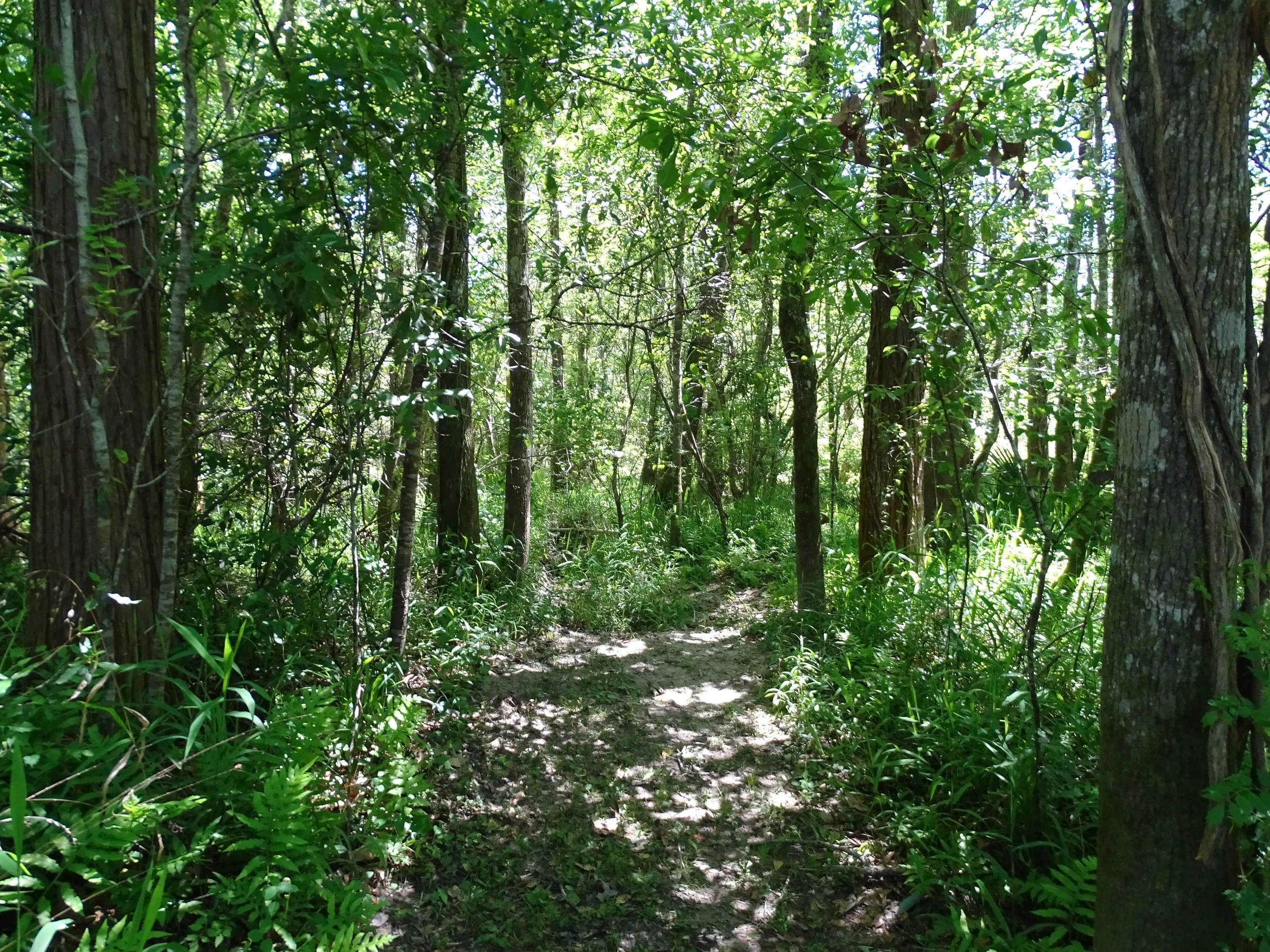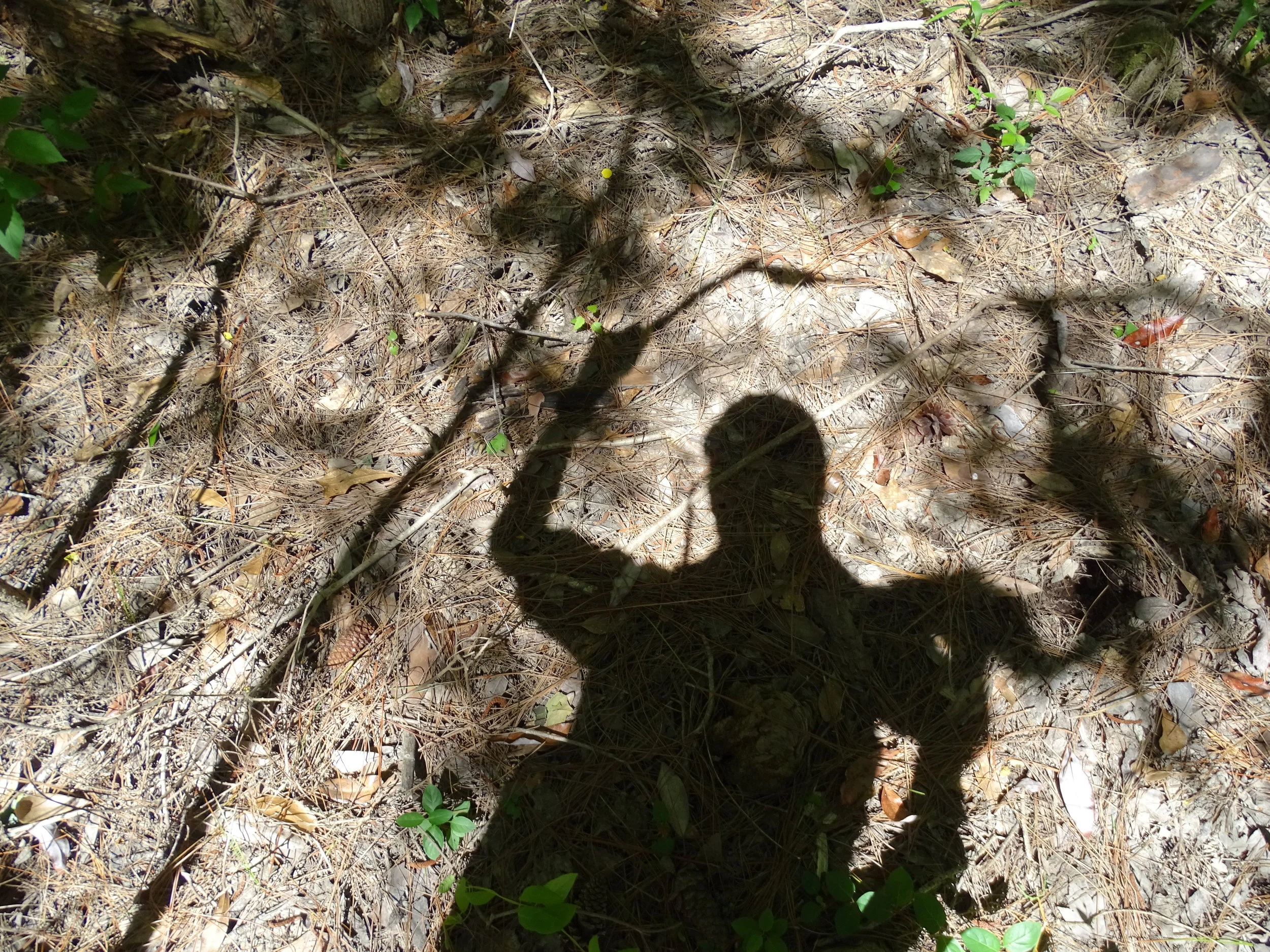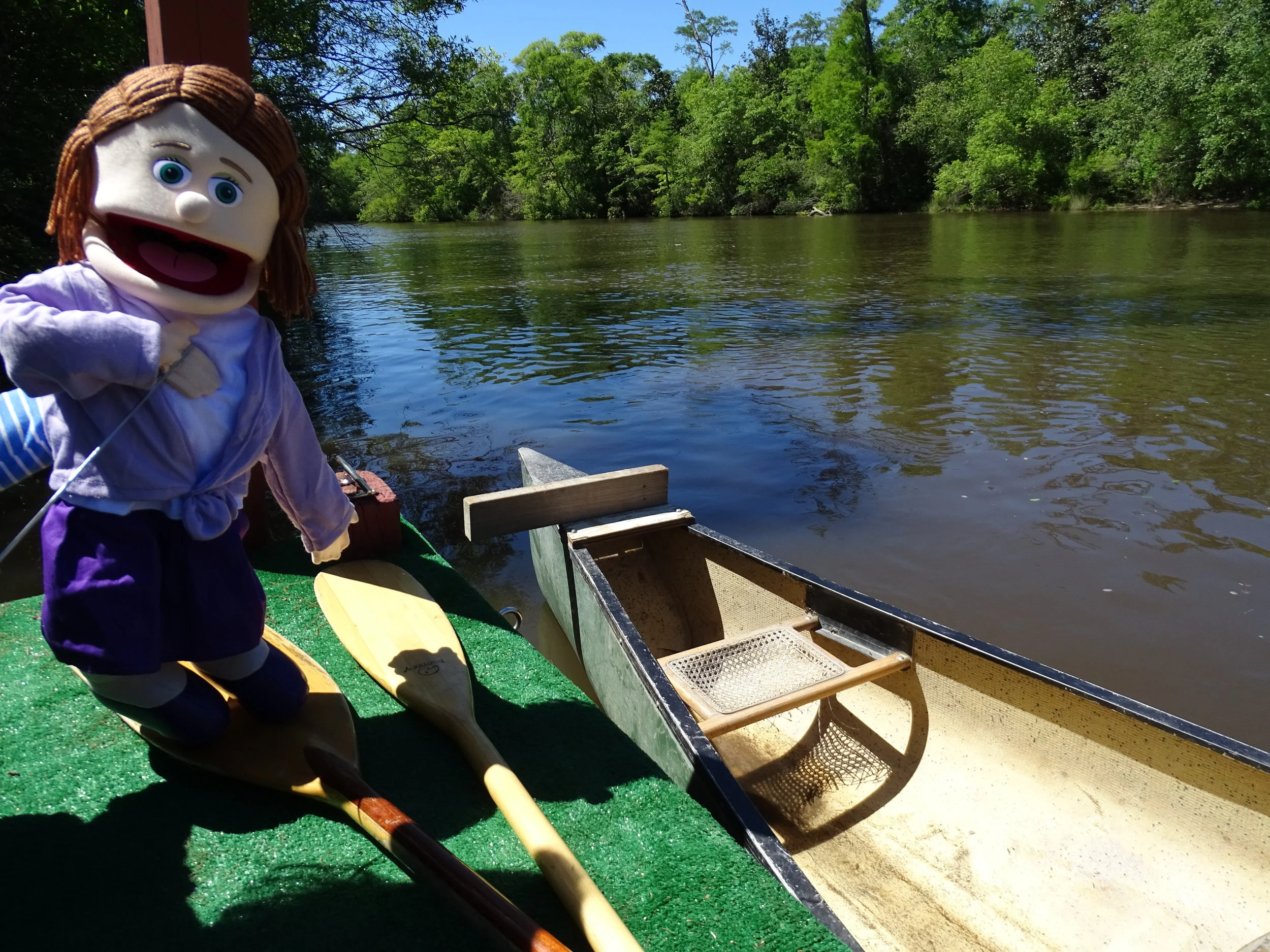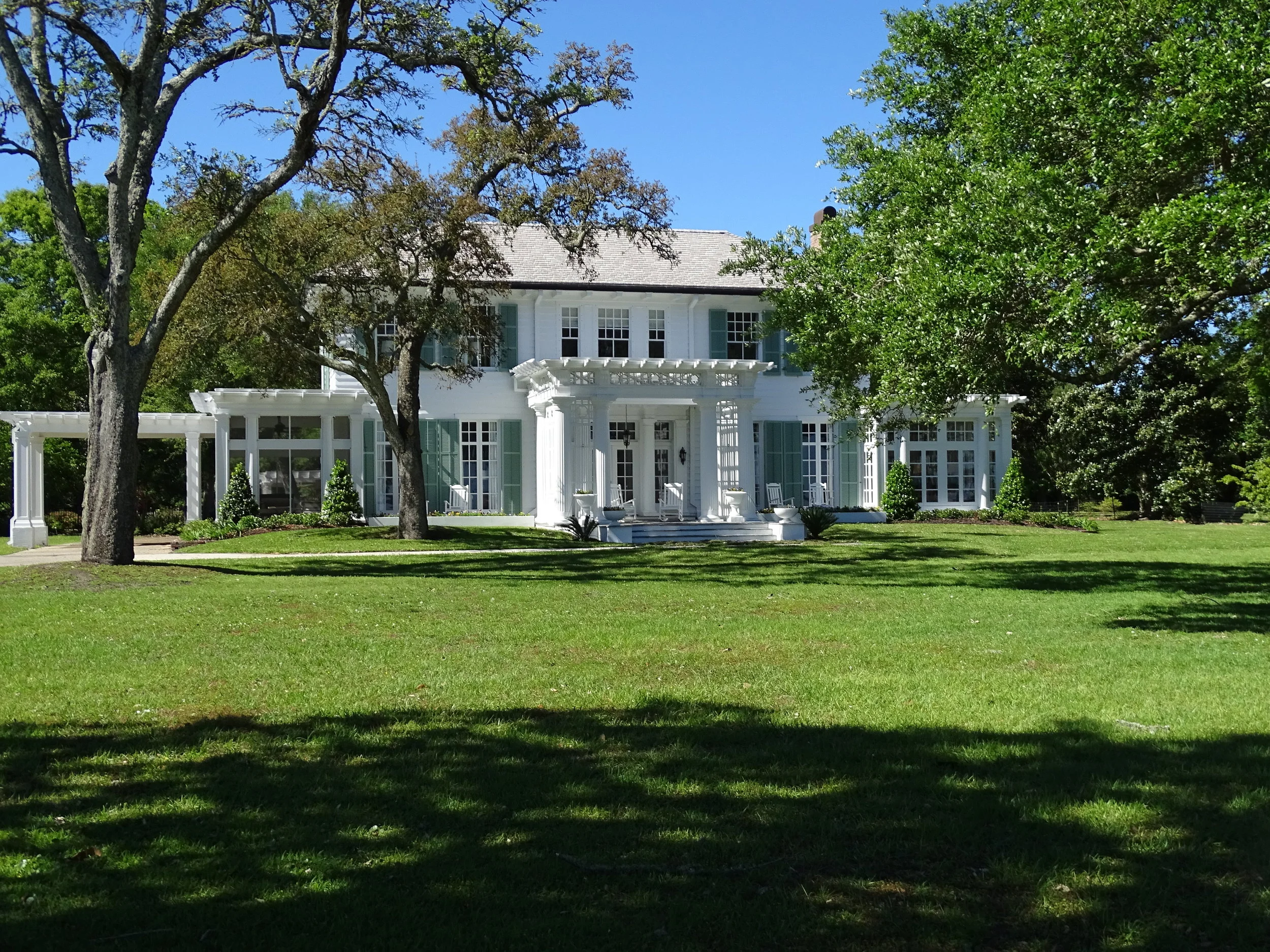Mississippi: The Gulf Coast Delivers Sun and Fun
Paddling a canoe provides a relaxing way to view the natural beauty of the Wolf River in Mississippi. SCROLL to the bottom to see a gallery of photos!
Anyone who loves white sandy beaches, delicious seafood and great adventures will find the Mississippi Gulf Coast also known as Coastal Mississippi an excellent vacation destination. The area’s tourism bureau uses the slogan “The Secret Coast” because it attracts fewer visitors than Florida’s beaches on the Gulf of Mexico, but you’ll still find miles of beautiful beaches with white sand and plenty of things to do. There are a dozen coastal communities in Mississippi.
We only visited the first trio of beach towns that you would encounter when traveling into Mississippi from New Orleans on I-10. They included Waveland, Bay St. Louis and Pass Christian. We’ll begin this journal talking about our favorite attraction in these communities—the Wolf.
WOLF RIVER
The river that locals simply call “the Wolf” begins near Hillsdale in Mississippi’s Pearl River County, where it consumes all the water from Wolf Creek and Mill Creek. From there, the Wolf passes through Hancock and Harrison Counties, draining other creeks, before emptying into Bay St. Louis at Pass Christian on the Gulf of Mexico. Despite looking lean and peaceful, the Wolf is powerful, relentless and surprising—capable of delivering devastating attacks when rain drenches Southern Mississippi. And some of the trees along the Wolf are still tilted from Hurricane Katrina’s impact in 2005.
The Wolf attracts tourists from surrounding states for fishing and relaxing, but most of the traffic on the serpentine river comes from nearby towns. If you have your own boat, access to the river is available through the mouth where it opens into Bay St. Louis and from Menge Avenue, north of Pass Christian, and from the Wolf River Marsh Coastal Preserve on West Whitman Road, northwest of Pass Christian. Wolf River Canoe and Kayak offers guided trips on the river. Go to the company’s website for information about tour options and pricing.
Arla worries that harm might come when going for a canoe ride on the dark, mysterious river known by locals as “the Wolf.”
BUCCANEER STATE PARK
What about the Mississippi beaches? They’re great, but you already know that’s available. We want to make sure you don’t skip this hidden gem. Buccaneer State Park is located on the beach, so you’ll get your fill of sun, sand and sea. At the same time, you’ll enjoy seeing the large, moss-draped oak trees and visiting the vast marshlands. There’s also a waterpark, playground, nature and birding trail, disc golf, activity building and campground store.
Buccaneer State Park, one of Mississippi’s 25 state parks, has 206 premium campsites with full amenities, including sewer. In addition to the premium sites, Buccaneer has an additional 70 campsites that are set on a grassy field overlooking the Gulf of Mexico. Castaway Cove (the campground pool) is available to all visitors to the park for a fee. Being in Waveland, the pool, of course, includes a wave pool.
The most remarkable feature of the park is how new it appears—and that’s due to Hurricane Katrina. With winds of 160 miles per hour and a 30-foot tidal surge, Katrina hit the park Aug. 29, 2005 and destroyed every structure at the park. About five years ago, the rebuilding was completed, and the park is now beautifully restored.
There’s more history connected to the park. The French buccaneer Jean Lafitte and his followers were active in smuggling and pirating along the Mississippi Gulf Coast in the late 1700s. Lafitte lived in a home not far from the park. During the Battle of New Orleans, Andrew Jackson used the area now occupied by the park for his military base of operations. Later, he returned and built a home there.
One of many historic homes found along Scenic Drive in Pass Christian.
PASS CHRISTIAN
Besides the beautiful beach, Pass Christian (population: 4,613) has a collection of impressive homes on Scenic Drive that you’ll want to see. The drive is easy to find because it runs parallel to Beach Blvd., which as you can guess is next to the beach.
The town’s shopping area isn’t extensive, but it’s upscale and fun to visit. There are several excellent restaurants in that area, but one of the most popular choices is on the other side of Beach Blvd. It’s Shaggy’s Pass Harbor, which is a lively, casual restaurant with Gulf views that serves off-the-hook fresh fish sandwiches as well as burgers, salads and much more. Use Discover South Mississippi for a guide to food and shopping in Pass Christian, Bay St. Louis and Waveland. It’s also an excellent resource for local accommodations, golf and nightlife.
Bikers, runners and walkers will like the paved path on the south side of Beach Blvd. Using the path is a great way to exercise while enjoying a Gulf view. You’ll find a similar beach path in Bay St. Louis and Waveland. If you aren’t afraid of heights, you can bike, run or walk across Bay St. Louis Bridge, which is a popular option for many residents and tourists. Be prepared for a robust run or walk. The bridge is two miles long.
BAY ST. LOUIS
Bay St. Louis (population: 9,260) has an impressive selection of stores and restaurants located along Beach Blvd. and on Main, State and Court Streets. These restaurants include the Purple Banana, Blind Tiger, Mockingbird Café, Triple Tails, Buoys Bar, and the Ugly Pirate Café and Bar. The Angel Trees of Bay St. Louis provide another point of interest. These carvings are placed throughout the downtown area.
Along with neighboring Pass Christian and Waveland, Bay St. Louis is a key part of the Mississippi Gulf Coast Scenic Byways. This is a designated series of scenic drives that take travelers through beautiful settings and to places with fascinating backgrounds such as the now extinct town of Logtown and land inside the Buffer Zone surrounding John C. Stennis Space Center. Visit the Scenic Byways website for directions and more information.
If you’re looking for a casino experience during your vacation, there are two choices in Bay St. Louis. They include the Hollywood Casino Gulf Coast, which is located at 711 Hollywood Blvd. Visit the Hollywood Casino website for details. Another option is the Silver Slipper Casino at 5000 S. Beach Blvd. See the Silver Slipper website for more info.
For golfers, the Bridges Golf Club next to the Hollywood Casino in Bay St. Louis is your best option.
WAVELAND
Waveland (population: 6,435), promoted as the Land of the Waves, begins and ends with a beautiful, white sand beach. Along the beach, there are many places to park to set up a place to lounge or to fish. We aren’t into fishing, but we noticed that the most popular fishing spots were around the docks and piers that extend far out into the Gulf or the small streams that end at Beach Blvd.
Check out the sturdiness of the Garfield Ladner Pier in Waveland. It was built of concrete, replacing the wooden pier lost in Hurricane Katrina. You’ll also want to look for the scenic Waveland Lighthouse.
Palm trees beautify the white sand beaches in Waveland.
ARLA’S SHOCKING MOMENT
Arla: The isolation of the Wolf struck me the moment I saw it. My first thought was somebody could get murdered here—and the murderer could get away with it. Surrounded by thick dark forests and making many turns that limit views of what’s happening up or downstream, the Wolf offers the perfect setting for a suspenseful murder mystery, especially with the possibility that an alligator could be lurking in the tall swamp grass that lines the riverbank.
LINDA’S TAKEAWAY
Linda: Enticed by the Wolf River’s beauty and isolation, some people choose to live next to the river, tolerating the overflow of its banks two or three times a year. Most homes along the river, even the small fishing cabins, are built on stilts to avoid flood damage. The residents deal with the frequent threat of flooding because the Wolf provides refuge from the noise and congestion of city life and serves as a playground for the rich, poor, and everyone in between. It’s a great place to unplug and chill out.
We’re fortunate to have a place to visit on the Wolf—the vacation home of my sister Donna and her husband Joe. We love to spend time dining on their deck that overlooks the river. Doug enjoys going for canoe rides, but I prefer to stay on the deck. Their home is located across the river from one of the few places on the Wolf where boaters can park and picnic or relax on a sandy beach. We’ve waved at many visitors who pass by, but the river becomes a “lone wolf” at other times.
DOUG’S HISTORICAL HIGHLIGHT
Doug: I want to go back to Coastal Mississippi and make an excursion to see Fort Massachusetts, which is on West Ship Island 12 miles off the coast. It is managed by the National Park Service as part of the Gulf Islands National Seashore that includes locations in Mississippi and Florida.
Setting plans to build the fort took decades and then the construction process that began in 1859 was interrupted by the Civil War. Confederate soldiers occupied the fort for a short time, but they later abandoned it to the Union Army. West Ship Island was later used by Federal troops to stage an invasion of New Orleans, with 18,000 soldiers briefly stationed there. Construction of the fort continued during the war and ended by 1866, but it was never fully armed. The U.S. Army shutdown the facility around 1900.
The best way to reach Fort Massachusetts is taking a Ship Islands Excursion ferry from Gulfport or Biloxi, Miss. Go to the excursion company’s website for additional information. We’ve added this trip to our travel agenda.
Storms coming off the Gulf of Mexico lead homeowners to use stilts to protect their property.
The full force of Hurricane Katrina hit Pass Christian, but the town has been restored and features some of the most beautiful homes in Coastal Mississippi.
ARLA’S TRAVEL TIPS
When coming into the area from New Orleans on I-10, take the first exit in Mississippi where you can visit the welcome center and rest area. Turn right after leaving the welcome center and use Highway 607 to head toward Waveland. You’ll want to make Buccaneer State Park your first stop. It’s located on the west side of Waveland and will give you an excellent introduction to the area’s natural beauty before you hit the beaches.
Don’t miss the photo ops provided by the beautiful nature and birding trail at Buccaneer State Park. There’s plenty of parking at the trailhead and it’s an easy hike unless you get there a day after a heavy rainstorm like me. While you’ll see many birds on the hike, you’ll also encounter a few mosquitos, so come prepared with insect repellant.
GEE WHIZ FACTS
Mississippi is taken from an Indian word meaning "Father of Waters." Mississippi means "large river" to the Chippewa Indians.
The Mississippi Gulf Coast was first home to the Biloxi Indians.
Napoleon’s first European settlement was in Mississippi in 1767 by Jean Claude Favre, and the area was later owned by his son Simon Favre. It makes us wonder if former NFL quarterback Brett Favre is related to Jean Claude.
Blues was a key element in the music of Pass Christian’s illustrious native son Captain John Handy (1900 to 1971) and other locals who played traditional jazz or rhythm and blues. Pass Christian has celebrated its rich African American musical heritage with various festivals, including "Jazz in the Pass," first held there in 1999.
Percival Stern, a New Orleans philanthropist and summer resident of Waveland, proved that citrus trees could be grown on the Gulf Coast.
